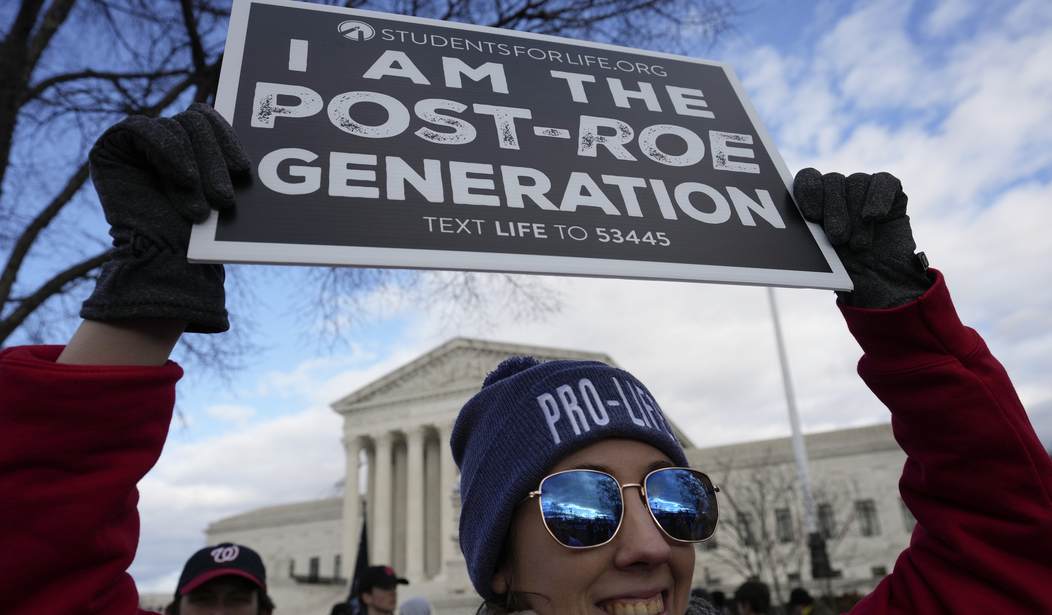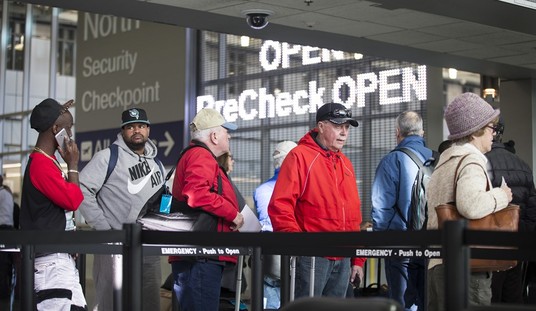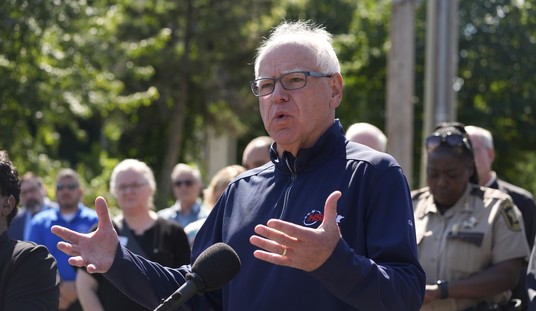One year ago today, June 24, 2022, the Supreme Court of the United States issued its landmark decision which overturned Roe v. Wade and removed 50 years of federal precedent over abortion, returning that decision-making power back to the states.
Federalism for the win.
Sanity for the win.
Life for the win.
LifeNews.com writes about the number of babies that have been born alive and saved since the Dobbs decision.
This Saturday is the one-year anniversary of Dobbs vs. Jackson Women’s Health Organization, the landmark Supreme Court decision that overturned Roe v. Wade, and reports show that in the last year, the number of abortions has decreased significantly across much of the United States.
Disney-owned polling website FiveThirtyEight stated that “there were 24,290 fewer legal abortions between July 2022 and March 2023, compared to a pre-Dobbs baseline.”
Of course, this is not without its detractors, and these factions remain strident (and in many cases violent) in their opposition to the Dobbs decision. The abortion lobby still paints Dobbs as SCOTUS overreach which outlawed the constitutional right to abortion. All SCOTUS did was look at case law since the 1973 Roe decision in light of the Constitution, and brought it back into line with the founding document.
There is no constitutional right to abortion enshrined in the Constitution. What is enshrined is the right of federalism: the individual states decide how they wish to enact the will of its citizens through particular laws. In many states, citizens include its most vulnerable persons, the ones within the womb. Therefore, any laws created surrounding abortion are best dealt with at that level, not through federal fiat.
This is why all this Republican blather about a nationwide,15-week abortion ban is a non-starter and seeks to neuter what Dobbs accomplished. With the overturn of Roe, states like Mississippi, Texas, and South Dakota can pass restrictive laws on abortion access, and they have. These states have outlawed abortion except in cases of rape, incest, and endangering the life of the mother, and heartbeat legislation that bans abortion after a heartbeat is detected. California, New York, and Maine maintain their right to enshrine abortion up to, and including, the time of birth, and in terms of California, they have codified it in their state constitution.
None of this was without turmoil, which culminated in the May 2022 leak of the Dobbs decision just a month before the final SCOTUS decision. This continues to play out in tumultuous ways across our nation, as crisis actors lie and gaslight about what the rendering of the Dobbs decision actually produced. In December 2022, six months after the Dobbs decision, practicing OB-GYNs were interviewed concerning the misinformation surrounding the Dobbs decision; misinformation fostered by the abortion lobby in order to maintain its enshrinement of abortion as a human right.
The doctors I spoke to said they encountered incorrect information about Dobbs and how it impacted their ability to provide patient care. They told me stories of confused and scared patients unsure if they still had access to basic, life-saving healthcare and doctors and nurses often reluctant to clear up that confusion or administer necessary care. Much of this fear and misunderstanding, they argued, is the result of a pro-choice refusal to provide clarity on women’s access to healthcare after Dobbs, because they want abortion be seen as a medically essential right.
Tracy Robinson, director of The Matter of Life documentary does a beautiful job of laying out the true facts.
FiveThirtyEight points out that the substantial rise in legal abortion in blue states was evidence that “many people did travel and successfully obtain an abortion within the US healthcare system.”
The polling site also charted the number of national abortions taking place per month in the nine months following Dobbs. Interestingly, its graph showed a mostly steady decrease from June to November 2022, followed by two “significant increases”: one in December 2022 and the other in March 2023, the last month of the study.
FiveThirtyEight goes on to speculate about the reasons why these numbers had an increase in December 2022 and March of 2023, and goes into flat-out hyperbole with the horror of women having to travel thousands of miles away from home and wait <*clutch the pearls!*> in order to murder their babies.
Texans making 4,000-mile round-trip journeys for abortions. Weeks-long waits for appointments at clinics across the Midwest. Desperate calls to abortion funds asking for help with procedure costs, flights and gas. One year after last summer’s decision in Dobbs v. Jackson Women’s Health Organization, this is the new reality of abortion in the U.S., as thousands of people are unable to obtain abortions in their home states or nearby — and tens of thousands more travel farther and farther to end their pregnancies.
Two points: One, this is how federalism works; and Two, murder should not be cavalier or convenient. It is reflective of just how much was lost when we opened the Pandora’s box of nationwide abortion access.
So, one year later, what has the Dobbs decision really wrought?
One of the claims from the abortion lobby, especially after Texas passed its heartbeat law, was that women were going to die, and doctors would refuse to treat ectopic pregnancies or miscarriages.
According to LifeNews, to date, no woman has died in the last year due to more restrictive abortion laws, and the same quality of care provided before Dobbs for ectopic pregnancies and miscarriages continues, even after Dobbs. Sadly, several women did die, or almost died because of abortion pill access and late term abortions.
Along with Mississippi, Texas was also the tip of the spear in the heartbeat legislation that assisted in Roe‘s demise, but the insistence that heartbeat laws are a danger and must be repealed continues to be a lie spread by activists onto an uninformed and fearful populace. According to the Center for Reproductive Rights, the Texas law is endangering women’s lives, and they have assisted five women who had to travel out of the state to have their abortions performed in seeking redress:
That heartbeat law is now being challenged. In March, the Center for Reproductive Rights filed a lawsuit on behalf of 12 women who claim the law interfered with getting “abortion care” that endangered their lives.
The case, Zurawski v. State of Texas, is thef first lawsuit brought on behalf of women denied abortions since the U.S. Supreme Court eliminated the constitutional right to abortion and cleared the way for states to ban it entirely. Since the Court’s ruling in June 2022, 12 states have made abortion illegal and many others have restricted it.
LifeNews does a great job of breaking down every heartbeat law in the nation, and summarizes the Texas law thusly.
Texas bans abortion unless the abortion is necessary to save the life of the mother or protect her from substantial impairment. In that case, the abortion provider must perform the procedure most likely to protect the life and health of the unborn child unless it poses a greater risk of death or substantial impairment to the mother. The definition of abortion excludes actions to protect the life or health of the unborn child, to remove a dead unborn child, or to treat an ectopic pregnancy. The law also shields healthcare providers who inadvertently cause harm to an unborn child while treating his or her mother, and women upon whom abortions are performed may not be prosecuted.
The plaintiffs in this lawsuit are being given full court press, some even accepted an invitation to the White House this week for its dog-and-pony show to commemorate condemn the one-year-old Dobbs decision. Texas plaintiff Lauren Miller’s journal about her experience has been profiled in The Guardian, but as of this writing, I have yet to see any analysts, legal or otherwise, who can point to how the law summarized above resulted in the damages these women claim in their stories.
I wait with bated breath.
State governments who have restricted abortion access have put their money where their mouth is in terms of fostering a culture of Life and making it about that for all stages of the child, not just while in utero. Mississippi governor Tate Reeves has signed into law measures for foster care and adoption reform, as well as expanded the tax credit for pregnancy resource centers across the state to the tune of $10 million. In March, Wyoming extended Medicaid for new mothers. Along with overturning their governor’s veto of a 12-week abortion ban, North Carolina legislators approved $160 million for child care, paid parental leave, and community college assistance for parents. West Virginia, which has some of the highest poverty rates in the country, has established the Mothers and Babies Support Program which among other things, gives funding to resource centers that help pregnant mothers.
And there are still glimmers of hope on this front from my former home state of California. On June 2, hundreds of pro-life activists and residents in Fontana protested the plans to build a Planned Parenthood facility in their city. According to Cal Matters, California has roughly 176 pregnancy resource centers throughout the state.
The organization Love Life has hundreds of California churches that act as Houses of Refuge to prevent abortions from happening in their congregation, to provide a place where women who have had abortions and men who have participated in abortions can heal, and to protect preborn life. They are geared toward making the church a place that women and their unborn babies can run to rather than run from.
These are the ways that not only legislation, but hearts and minds are being transformed for the cause of Life. While this was occurring before 2022’s Dobbs decision, the release of the federal stranglehold and excuse to continue a death dealing practice has allowed the unleashing of new and creative ways each state can continue to choose Life. They also can protect not just the rights of the unborn, but of vulnerable children under attack by the transgender agenda.
Really, this is what federalism is all about—freedom fosters a responsibility to ensure all get to experience life, liberty, and the pursuit of happiness.
The truth is that life is winning in the hearts and minds of Americans. There is momentum in saving lives and serving mothers. Governors and legislators are advancing protections that reflect the compassionate will of the people and the science, and in many cases, expanding the safety net for mothers and children at the same time.
Let’s continue the work.















Join the conversation as a VIP Member